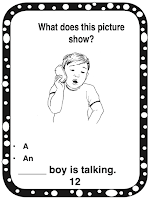Hi everyone!
Welcome!
Today I would like to talk about using scaffolding instruction with ELLs. What is it? How do we do it?
Scaffolding instruction is essential when working with English learners in the classroom or in ESL and intervention groups. English newcomers to early advanced speakers need this support at some level.
Scaffolding instruction:
When teachers break learning into smaller chunks and give students temporary
- support
- structure
- and tools to work with
Scaffolding starts with:
high temporary support. This support is gradually taken away until the learner can produce the work on their own.
Scaffolding includes:
a variety of essential techniques or steps that helps move the learner toward higher levels of understanding and independence when learning.
Scaffolding can be used:
in a broad range of content areas and grade levels. Let’s look at a few of my favorite scaffolding strategies.
Shared experience:
To access and build common background knowledge begin with a shared experience:
• a video
• a shared reading
Graphic Organizers:
• Venn Diagrams and Double Bubble Charts to compare and contrast information
• Mind Maps help show relationships, note taking and book summaries
• Rubrics that show what is expected on an assignment
Task Cards:
Task cards are given to students that
frame a topic or subject.
·
Vocabulary Lists
Target and signal words and vocabulary lists with definitions that are content-specific. Provide lists of transition words and conjunctions. Add new words to the lists as you use and discover them.
Topic or content sentence frames
Use sentence frames, sentence forms, and sentence starters to support the use of complete sentences in writing and spoken discourse. Use these for both whole group and partner discussions.
support written ideas. Begin with simple sentences and build to compound sentences.Provide visual word walls
- add new words as you go along.
What are some of your favorite scaffolding techniques? Which do you find work best with second language learners?
Happy Teaching!





No comments:
Post a Comment